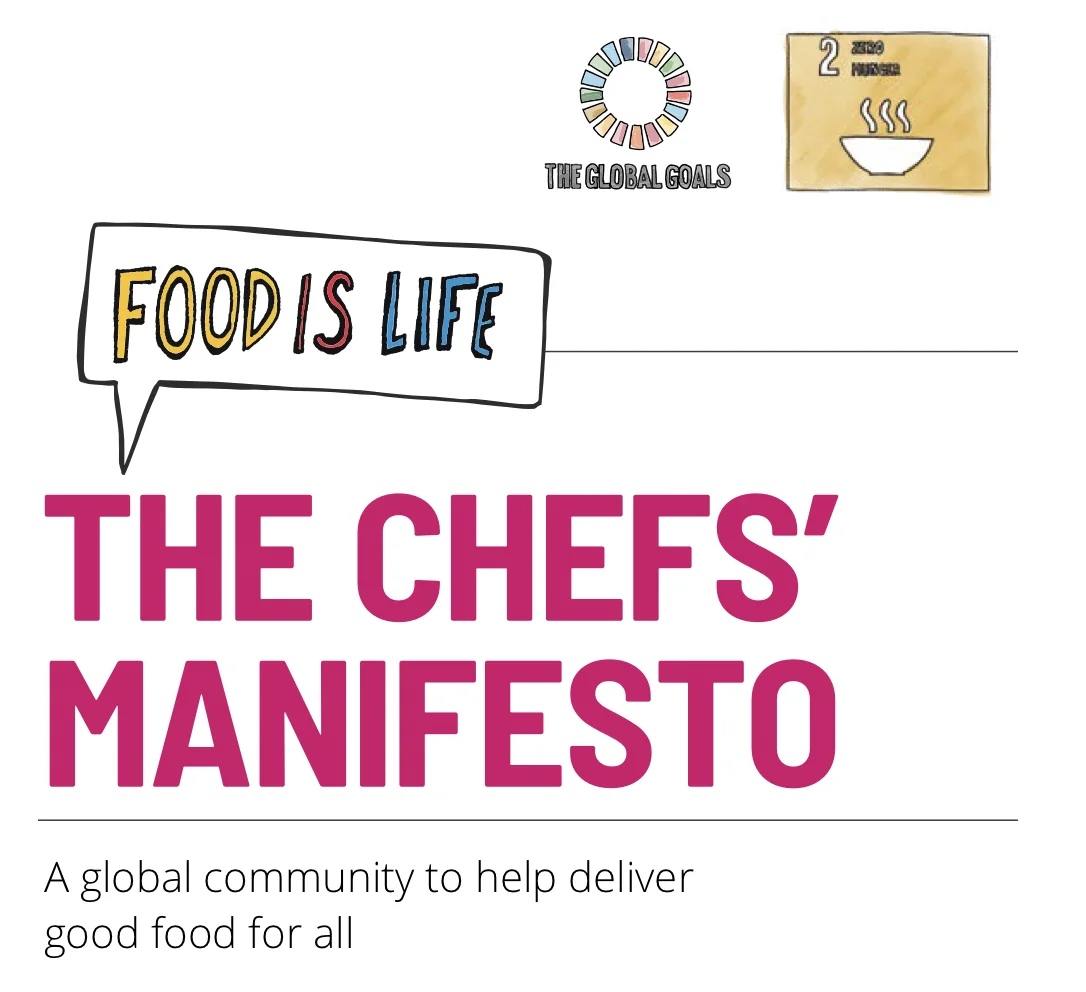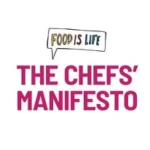The Chefs’ Manifesto hosted this webinar to present diversified diets and fortification as two elements in delivering good food for all. This discussion among chefs and key thought leaders from around the world was embedded in Thematic Area 8: nutritious food that is accessible and affordable for all.
What role do diverse and fortified diets have in school meals, ensuring Good Food for All?
Alison Oman Lawi – Acting Director of Nutrition, World Food Programme
Some students receive their only meal of the day at school. All children have the right to nutritious food at the proper time in their development to reach their full potential. However, some children receive their only meal of the day at school. The right micronutrients are crucial for cognitive and physical and development.
In Cambodia, the government began providing school meals in 1999. Where outside products were originally used, now local products are sourced. They are able to find fresh ingredients and complement them with locally consumed staples which have been fortified with the necessary micronutrients.
In Burundi, 500,000 children have been fed through homegrown school feeding programs where Vitamin A and Iron deficiencies affect their learning potential. Now, schools work with farmers to supply milk, one of the only sources of protein they receive. The school feeding program encourages children to attend school, parents to send them, and benefits both health as well as education.


What role can large scale fortification play in delivering good food for all?
Andreas Bluethner – Director of Nutrition, Bill and Melinda Gates Foundation
Micronutrients are essential for life and their accessibility and affordability is a human right. A balanced diet is still considered a luxury by the majority of the world’s population. While there is no silver-bullet solution, promoting balanced diets and fortifying foods can act as effective interventions.
Staples such as salt, oil, and flour are foods that many people eat already. Adding micronutrients such as Vitamin A, Zinc, Iron, and Folic Acid in the milling process fortifies the food without requiring any behavioural change on the part of the consumer. We need better data on where food is fortified, where it is most needed, where people shop, and what micronutrient deficiencies are most prevalent.
Micronutrient deficiencies are an intersectional issue. 45% of child deaths are attributed to micronutrient deficiency yet only 1% of national budgets are allotted to nutrition. Women are affected disproportionately by micronutrient deficiencies, also impacting children in utero and breastfed children. A multi-sectoral approach to combat deficiencies requires governments to define adequate nutrient levels, schools to provide meals, and mill centres to increase fortification.
However, we should consider prevention of malnutrition and not only management through fortified foods. Poverty is the main cause of the inability to afford healthy diets. What solutions are possible to prevent micronutrient deficiencies?
What is the role of chefs in championing good food for all?
Chef DK – Thailand
Chef DK learned about fortified foods just one year ago and it has been a game changer for him. He has been able to include fortified foods on the menu at his restaurant Haoma, and in his everyday life. He collaborated with GAIN to learn about fortification and the many ways it is helping diverse populations around the world.
Fortification is cost efficient and can be tailored for the populations’ needs. The final product will contain 1-2% of the selected vitamin.
Watch the video to follow Chef DK’s journey and learn how fortification can fight hidden hunger and nourish the soul.
Why don’t we have nutritious food for all?
Christine Campeau – Senior Advisor, Food Systems, CARE USA and United Nations Food Systems Summit Action Track 4 Chair
Food insecurity and malnutrition are the result of systemic inequalities in the food system which shape access to food. Those who produce food are often the first to go hungry. The pandemic has created unequal localised disruptions in the food chain as well as price spikes. These factors have increased food insecurity around the world.
Women play a vital role in food system and yet they eat the least and last. They are the first to feel income loss as a result of external shocks such as the pandemic. When women suffer it harms the entire household. Where women are empowered, entire communities are lifted out of poverty.
Food insecurity in the U.S. is an income problem. Unemployment, nearly 15% during pandemic, has disproportionately affected communities of colour. Systemic discrimination and poor urban planning are evident even in the nation’s capital, Washington D.C., where there are high rates of diabetes.
We need to advance equitable livelihoods so that we can feed families with dignity.
Good food begins with farmers
Cherrie Atilano – CEO of AGREA
Smallholder farmers are the poorest, hungriest and most malnourished. We must dignify the producers in the value chain. AGREA promotes climate resilient cropping systems and diversification. Agriculture is the foundation and food is the umbilical chord to mother earth. Nutrient dense farming has the potential to produce food for farmers and their families to eat, as well as to sell. Farmers have signed a letter of intent with AGREA to produce food for themselves, commit to properly processing food and commit to education.
Education is a tool to eating healthy. Farmers often harvest, produce, and sell their produce, only to then use the money to purchase highly processed foods. There is a common perception that processed food is a status symbol. Chefs and others can teach people how to source local food and create healthy, affordable, and culturally appropriate meals.
What does this look like on our plates?
Chef Anahita Dhondy – India
Chef Anahita Dhondy shared her experience of creating delicious meals with fortified rice. Chefs are in the middle of the food system, sitting between farm and fork. They can influence and advocate by bringing the conversation of diverse ingredients and fortification into restaurants, soup kitchens and schools. Chefs have the ability to put nutritious food on the plate, make it delicious and teach others how to do the same.

How do we advocate for Good Food for All?
Fokko Wientjes – Vice President Sustainability Nutrition Partnerships & Programs at DSM
While we cannot dictate a consumer’s choice in terms of fortified foods, we can begin to nudge them in the right direction. Producers and suppliers can make nutritious food more available and affordable. Governments can build trust by creating affordable yet profitable solutions. Centering the consumer and their ability to understand the importance of fortification is key.
Chef Elijah Addo – Ghana
Fortification started in Ghana in 1990 with Iodised salt. However, since then, there has not been much advocacy for fortified foods. There is a widespread perception that fortification actually strips food of its original nutritional value or changes the taste. Both are untrue. Various stakeholders need to be involved in food distribution and educating youth on the potential of fortified foods, which can establish healthy eating habits at a young age.
Chef Arthur Potts-Dawson – U.K.
Chef Arthur adds that we must connect with nature to supply diverse diets and not just rely on fortification for our micronutrient needs. We need healthy plants to foster healthy minds, bodies, and the planet.

All the panelists agreed, the upcoming U.N. Food Systems Summit needs to ensure the voice of all communities are being heard. From producers to retailers to consumers, a people-centred approach backed by government funding and ministerial attention can affect accessibility of nutritious and diverse diets. Follow the Chefs’ Manifesto for more information on diverse diets, fortification, and upcoming events.


